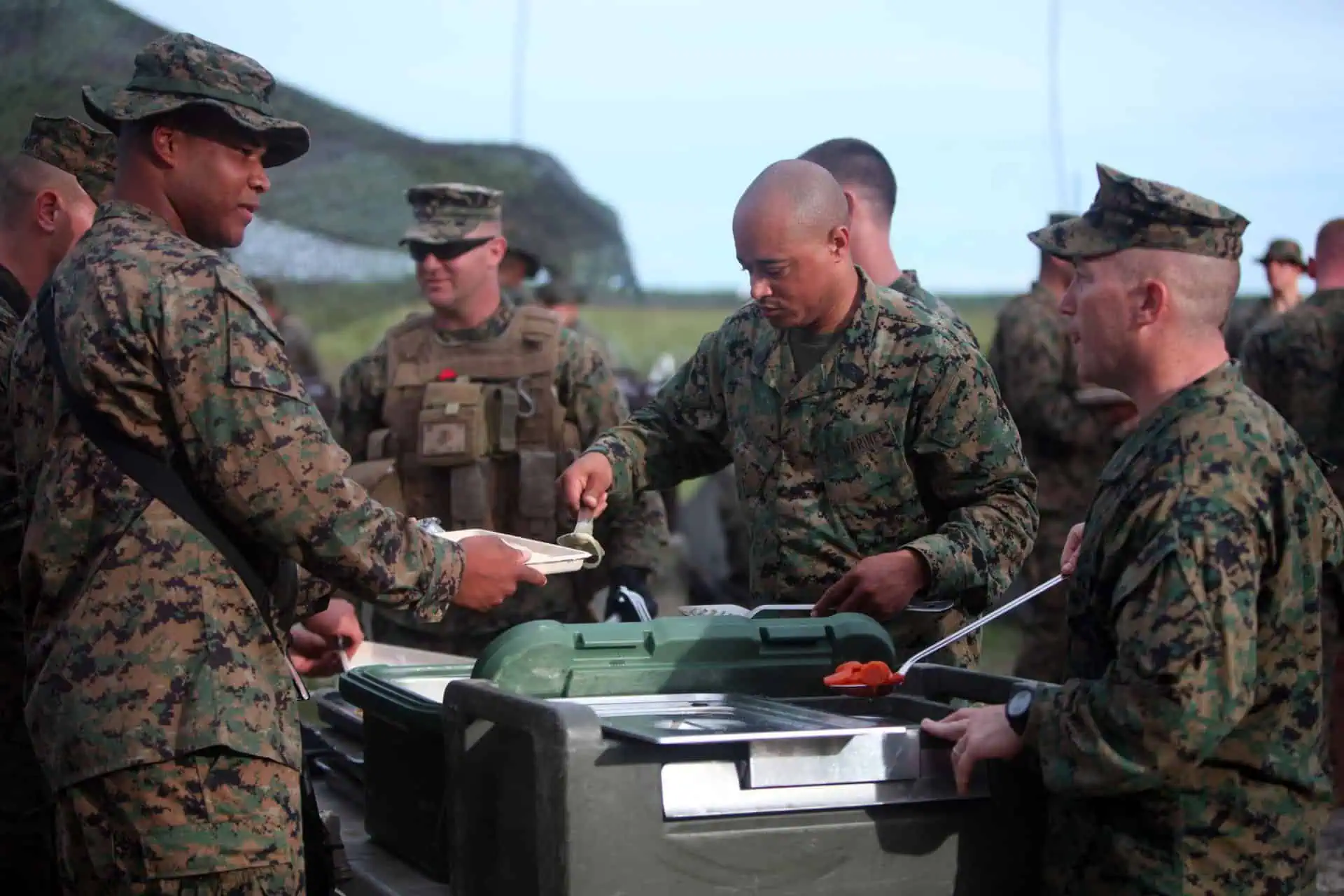Is Camp Lejeune Water Still Contaminated?
- Last Updated: June 12th, 2025

Attorney Jessica Paluch-Hoerman, founder of TruLaw, has over 28 years of experience as a personal injury and mass tort attorney, and previously worked as an international tax attorney at Deloitte. Jessie collaborates with attorneys nationwide — enabling her to share reliable, up-to-date legal information with our readers.
Legally Reviewed
This article has been written and reviewed for legal accuracy and clarity by the team of writers and legal experts at TruLaw and is as accurate as possible. This content should not be taken as legal advice from an attorney. If you would like to learn more about our owner and experienced injury lawyer, Jessie Paluch, you can do so here.
Fact-Checked
TruLaw does everything possible to make sure the information in this article is up to date and accurate. If you need specific legal advice about your case, contact us by using the chat on the bottom of this page. This article should not be taken as advice from an attorney.
Is Camp Lejeune Water Still Contaminated?
Question: Is Camp Lejeune water still contaminated?
Answer: The drinking water at Camp Lejeune has been safe to consume since 1987.
The most significantly contaminated wells are no longer in use today.
Intro to the Camp Lejeune Water Contamination
Camp Lejeune is a Marine Corps base in Jacksonville, North Carolina.
For more than 30 years, from about 1953 to 1987, the water supply at Camp Lejeune was contaminated with harmful chemicals that have the potential to cause serious health conditions, including certain types of cancer and other diseases.
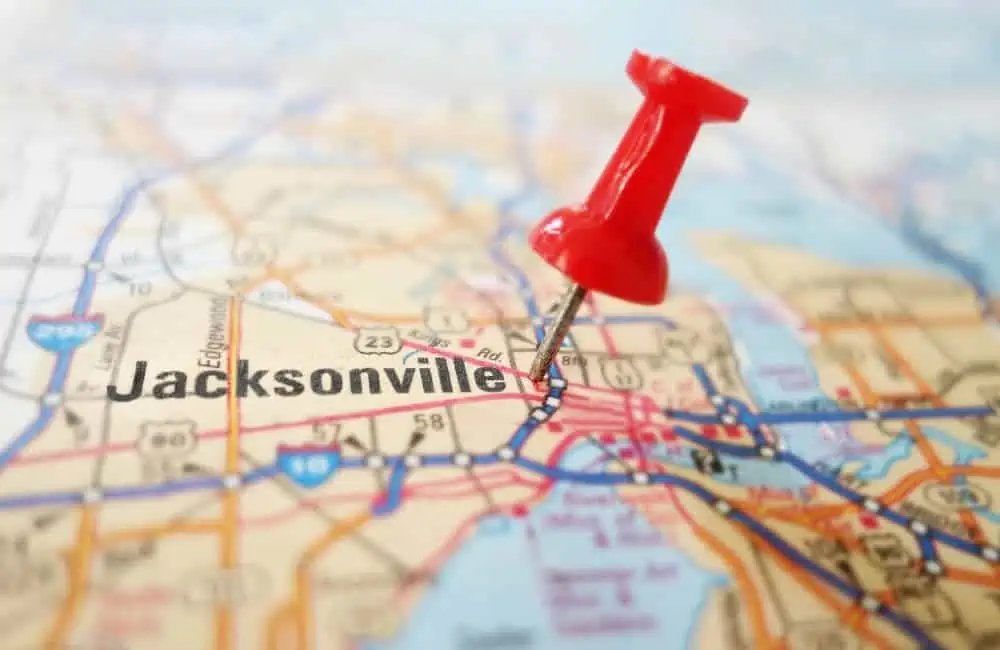
During the time that the water was contaminated, around 750,000 people who lived and worked at Camp Lejeune — including active-duty service members, their families, and civilian employees — regularly bathed in and ingested the hazardous substances contained in the water.
A comprehensive testing initiative was implemented in the early to mid-1980s, which resulted in contaminated water sources being shut down.
Since 1987, there have been no significant reports of water contamination at Camp Lejeune, but unfortunately, the water testing came far too late for service members and others who were regularly exposed to hazardous chemicals on the base in the 30+ years prior.
Table of Contents
Contaminated Water at Camp Lejeune
The Agency for Toxic Substances and Disease Registry (ATSDR) estimates that hazardous chemicals began appearing in the water system at the Hadnot Point water treatment facility on the base around 1953.
The ATSDR further estimates that chemical contamination began to occur at the Tarawa Terrace water treatment plant beginning in 1957.
Contaminated wells at these two plants were a primary source of drinking water contamination at Camp Lejeune.
PCE, or tetrachloroethylene, was the main chemical compound found at the Tarawa Terrace water treatment facility.
The source of the contamination was found to be an off-base dry cleaner.
PCE is often used for dry cleaning purposes.
The company had improperly disposed of its chemical waste, which allowed it to seep into the groundwater.
The main chemical found at the Hadnot Point treatment facility was TCE, or trichloroethylene.
The ATSDR determined that there were numerous potential sources for the TCE found at Hadnot Point.
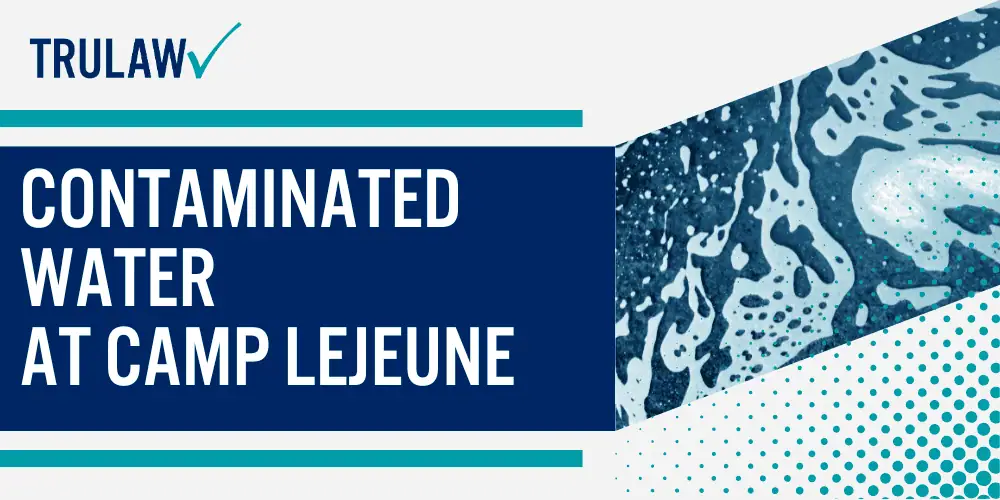
Resources likely included leaking underground tanks, hazardous waste disposal areas, and industrial spillage.
Other chemicals, including PCE, DCE (dichloroethylene), vinyl chloride, and benzene, were also found at Hadnot Point.
Water wells near possibly contaminated sites were tested between 1982 and 1984.
In early 1985, ten wells were retired on the same day after it was determined that they were affected by chemicals like PCE and TCE.
Is It Safe to Drink Water at Camp Lejeune Today?
The drinking water at Camp Lejeune has been safe to consume since 1987.
And the most significantly contaminated wells are no longer in use today.
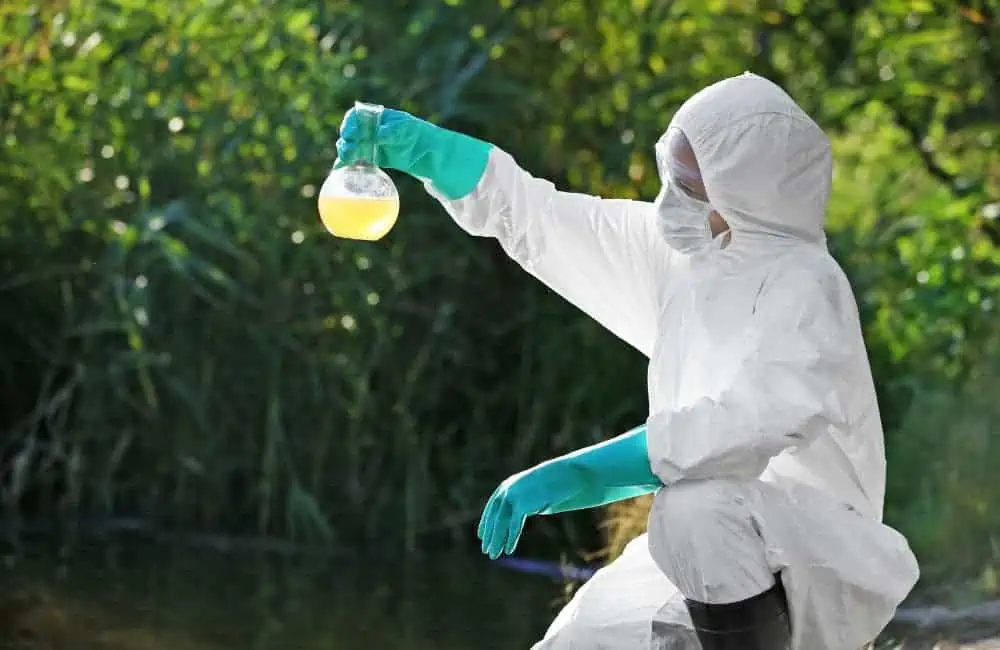
According to the United States Marine Corps, the water at Camp Lejeune is regularly inspected for volatile organic compounds, or VOCs (TCE and PCE are both VOCs).
In fact, tests at Camp Lejeune are conducted more frequently than is typically required.
The camp’s water supply meets the rigorous state and federal standards that were created to ensure safe drinking water.
Consumer Confidence Reports are distributed to residents of Camp Lejeune once a year to reaffirm the safety of the drinking water on the base.
Steps Camp Lejeune Is Taking to Prevent Water Contamination Today
Efforts are ongoing to ensure that the water quality at Camp Lejeune remains safe.
These efforts include water quality testing, abiding by up-to-date waste management rules and guidelines, and eliminating toxins from past hazardous waste areas.
You can view the camp’s recent water quality reports here.
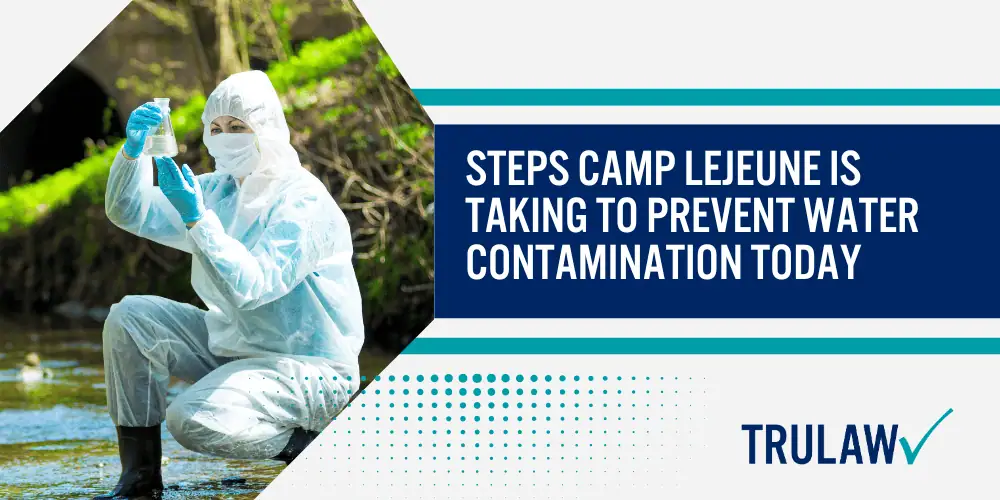
Camp Lejeune follows the Resource Conservation and Recovery Act (RCRA) of 1976 to prevent future groundwater contamination.
One of the primary goals of the RCRA is to safeguard human health and protect the local environment from hazards associated with waste disposal.
Camp Lejeune also abides by CERCLA, or the Comprehensive Environmental Response, Compensation, and Liability Act of 1980.
This act aims to mitigate the impact of hazardous chemicals when they are released into the environment.
Camp Lejeune maintains an active CERCLA-compliant program.
The program’s mission is to deal with former toxic waste sites and tackle groundwater contamination before it impacts the water supply.
If you were exposed to contaminated water at Camp Lejeune for a period of at least 30 days from August 1, 1953, to December 31, 1987, and were later diagnosed with a serious health issue, you might be entitled to file a claim and recover compensation with the Camp Lejeune Justice Act now signed into law.
The attorneys at TruLaw are prepared to begin the legal process as for any new claimants needing assistance.
If you believe you qualify, visit our Camp Lejeune Contaminated Water Lawsuit page and get an instant case assessment.

Managing Attorney & Owner
With over 25 years of legal experience, Jessica Paluch-Hoerman is an Illinois lawyer, a CPA, and a mother of three. She spent the first decade of her career working as an international tax attorney at Deloitte.
In 2009, Jessie co-founded her own law firm with her husband – which has scaled to over 30 employees since its conception.
In 2016, Jessie founded TruLaw, which allows her to collaborate with attorneys and legal experts across the United States on a daily basis. This hypervaluable network of experts is what enables her to share the most reliable, accurate, and up-to-date legal information with our readers!
Additional Camp Lejeune Water Contamination Lawsuit resources on our website:
Here, at TruLaw, we’re committed to helping victims get the justice they deserve.
Alongside our partner law firms, we have successfully collected over $3 Billion in verdicts and settlements on behalf of injured individuals.
Would you like our help?
At TruLaw, we fiercely combat corporations that endanger individuals’ well-being. If you’ve suffered injuries and believe these well-funded entities should be held accountable, we’re here for you.
With TruLaw, you gain access to successful and seasoned lawyers who maximize your chances of success. Our lawyers invest in you—they do not receive a dime until your lawsuit reaches a successful resolution!
AFFF Lawsuit claims are being filed against manufacturers of aqueous film-forming foam (AFFF), commonly used in firefighting.
Claims allege that companies such as 3M, DuPont, and Tyco Fire Products failed to adequately warn users about the potential dangers of AFFF exposure — including increased risks of various cancers and diseases.
Depo Provera Lawsuit claims are being filed by individuals who allege they developed meningioma (a type of brain tumor) after receiving Depo-Provera birth control injections.
A 2024 study found that women using Depo-Provera for at least 1 year are five times more likely to develop meningioma brain tumors compared to those not using the drug.
Suboxone Tooth Decay Lawsuit claims are being filed against Indivior, the manufacturer of Suboxone, a medication used to treat opioid addiction.
Claims allege that Indivior failed to adequately warn users about the potential dangers of severe tooth decay and dental injuries associated with Suboxone’s sublingual film version.
Social Media Harm Lawsuits are being filed against social media companies for allegedly causing mental health issues in children and teens.
Claims allege that companies like Meta, Google, ByteDance, and Snap designed addictive platforms that led to anxiety, depression, and other mental health issues without adequately warning users or parents.
Transvaginal Mesh Lawsuits are being filed against manufacturers of transvaginal mesh products used to treat pelvic organ prolapse (POP) and stress urinary incontinence (SUI).
Claims allege that companies like Ethicon, C.R. Bard, and Boston Scientific failed to adequately warn about potential dangers — including erosion, pain, and infection.
Bair Hugger Warming Blanket Lawsuits involve claims against 3M — alleging their surgical warming blankets caused severe infections and complications (particularly in hip and knee replacement surgeries).
Plaintiffs claim 3M failed to warn about potential risks — despite knowing about increased risk of deep joint infections since 2011.
Baby Formula NEC Lawsuit claims are being filed against manufacturers of cow’s milk-based baby formula products.
Claims allege that companies like Abbott Laboratories (Similac) and Mead Johnson & Company (Enfamil) failed to warn about the increased risk of necrotizing enterocolitis (NEC) in premature infants.
Here, at TruLaw, we’re committed to helping victims get the justice they deserve.
Alongside our partner law firms, we have successfully collected over $3 Billion in verdicts and settlements on behalf of injured individuals.
Would you like our help?
